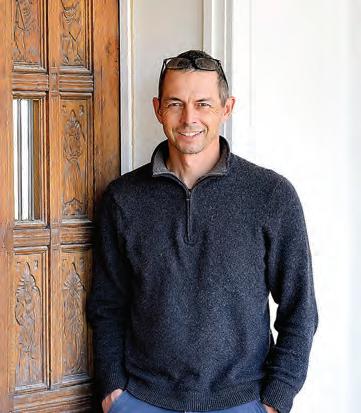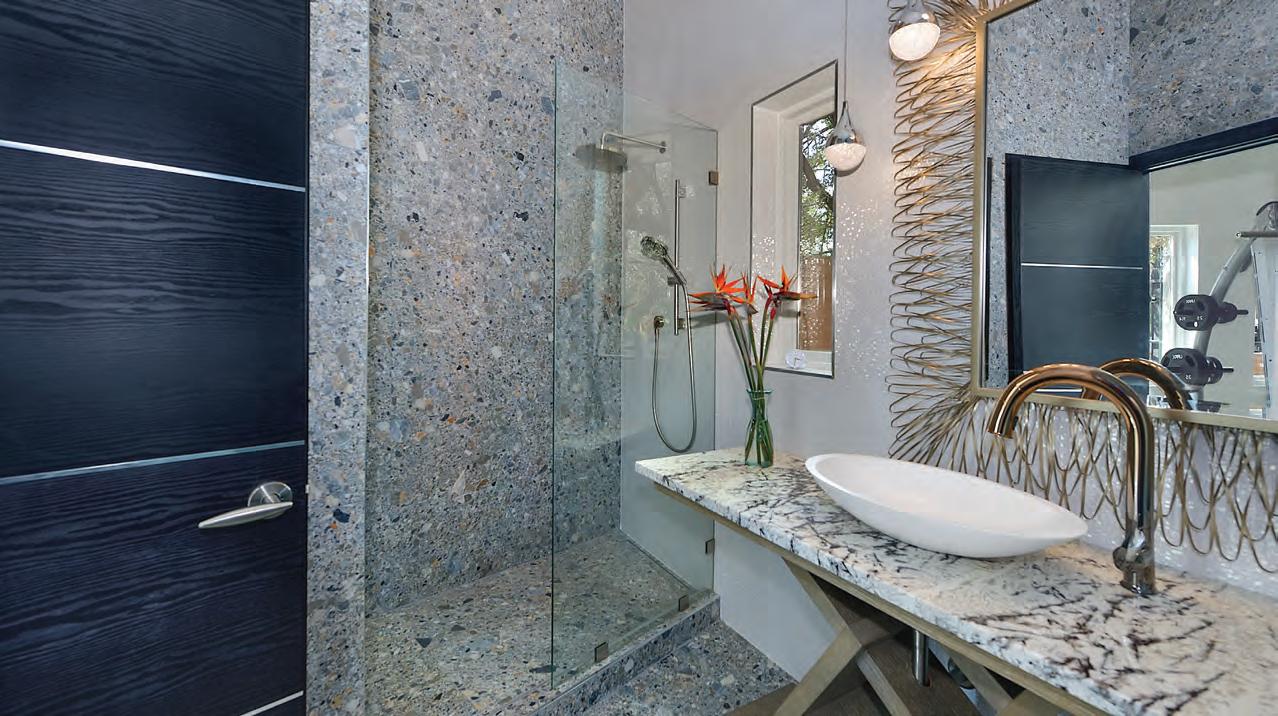
7 minute read
CONSTRUCTION 101
Building tips to help you understand the path to your forever home
By Julian Dossett
Considering a new build or remodel? Researching the ins and outs of building in Santa Fe — and the professionals who do it — helps construction run efficiently. “Talk to the community,” advises Solange Serquis, principal at landscape architects Serquis + Associates and founding partner at Trailhead Design Source, a live/work hub. “We have a beautiful, resourceful community. We always learn from neighbors.”
Whether you’re tackling a long-awaited remodel or building from scratch, knowing what’s ahead will make the path smoother.
• Create a budget. Budgets are only helpful when they’re realistic. Find the real costs that come with materials and labor. Your architect, home builder, and/or interior designer can help fine-tune estimates based on the most recent prices of materials.
• Assemble your team. You’ll want to consult an architect, home builder, or general contractor to make your dream a reality. These advisers may also recommend consulting with an engineer about mechanical and structural issues; with an interior designer for recommendations on lighting, flooring, and other elements to make your house feel like a home; and with a landscape designer to create outdoor living spaces. Before hiring any team member, ask about their past projects and experience, the types of homes they’ve worked on, and the budgets with which they usually work. You’ll want to ensure they’re a good fit for what you want to build or create within your existing home.
• Finance it. Unless you’re paying everything out of pocket, financing is a major aspect of home construction or remodeling. When you approach a lender, they’ll ask for financial documents such as bank statements, employment records, and notices of existing debt. Laura Gallegos, WaFd Bank senior commercial real estate loan coordinator, recommends carefully considering how much you can afford. “Look at your earnings, your spendings. How much do you have left?” Gallegos says. When applying for a construction loan, you’ll also need documents such as building plans, specs, cost estimates, and the contract with the home builder.
• Find your perfect spot. Land that seems ideal for building a home may look different on closer inspection. Before buying land, identify the property boundaries, applicable building restrictions such as setback requirements, and available utilities. New residential construction in Santa Fe must meet environmental and building standards, so it’s important to understand any limitations before breaking ground. Experienced architects, designers, engineers, and builders can help guide you.
• Watch your vision come to life. After acquiring building permits and beginning construction, there will be many exciting moments such as choosing finishes and selecting appliances. The pouring of the foundation; framing — when the floor, walls, and roof begin to take shape — and installation of the plumbing, electrical, and HVAC systems are all important construction milestones. After drywall, all the details that make the house uniquely yours — such as countertops and kitchen and bathroom fixtures — go in. Then you’ll see your dream home or space taking shape.
• Keep in mind that no budget will be perfect. You may need to alter estimates as construction progresses. This is especially true for remodels, which often require addressing unforeseen issues along the way. “Remodeling anywhere can be a challenge, but Santa Fe is unique in the variety of building materials used to build homes,” says general contractor Tom Treece of Arpad Builders. “There can be 100-plus-yearold adobe homes — an older home is likely to have been remodeled several times — sometimes remodeled well and sometimes not.”

• Plan your outdoor living spaces. Quality landscaping requires much more than just planting. Serquis encourages homeowners to “really try to learn from the land before making a big modification.” Santa Fe’s geography and weather require special considerations. “We have very strict and unforgiving conditions,” Serquis says. “We need to ensure the materials are up to it.” Nonliving outdoor installations and structures, such as walkways and sculpture, known collectively as hardscaping, can help create a robust landscape. When selecting plants, look for vegetation native to the region. They will make your landscape more resilient.
• Complete the final inspection and walk-through. This is your opportunity not only to learn about the functions of your new home or space but also to spot items that need to be fixed or adjusted. Being attentive and detail-oriented will serve you well during this process. Understand your contract with your builder so you know when and how you can return to them for corrections as you live in your space. Quality builders will want to earn your satisfaction and future recommendation.







Santa Fe Style
Two experts weigh in on the evolution of the City Different’s signature look
Santa Fe style may be iconic, but the details are as diverse as the city’s residents. Haciendas — A Parade of Homes magazine asked two local builders how they define it, how it’s evolving, and what’s next for this distinctly regional style. Beyond a few basics, they say, Santa Fe style is organic. Ultimately, it’s about homeowners making their dwellings their own.
Frank Yardman Iii
Frank Yardman III is a third-generation Santa Fe general contractor with 40 years of experience at Frank Yardman Construction, a custom homebuilding business he helped establish with his father in 1983. The company is still family-run. Frank Yardman Construction earned the 2022 Best in Show Santa Fe Contemporary Award from the Parade of Homes.
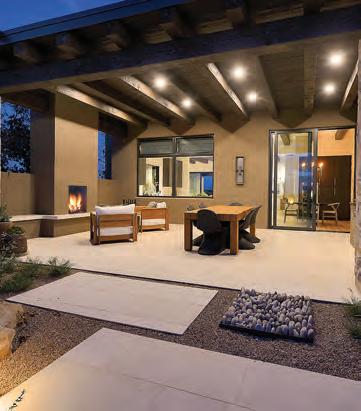

How do you define traditional Santa Fe style?
In my mind, traditional Santa Fe style has a lot of curves, softness, and texture. As a native Santa Fean, I find it very beautiful. It’s appealing to most people wanting the feel of Santa Fe.
Has the demand for contemporary style grown?
During COVID-19 there was an influx of people to Santa Fe. We saw people who dreamt of retiring or living in Santa Fe as a long-term goal who sped up their timelines. When they arrived, they wanted their homes to be regional but have clean lines. The contemporary style was in high demand.
What are the hallmarks of contemporary Santa Fe style?
Contemporary homes lean toward open kitchens, dining, and living areas. They have clean, crisp corners and a lot of glass to bring the indoor and outdoor together.
How will Santa Fe style continue to grow?
We’re seeing the pendulum swing back from very contemporary to more of a happy medium, especially with warmer finishes — wood elements, natural stone. I think [Santa Fe style is] going to continue to evolve to find a balance. We’re getting requests for more traditional vigas, wood floors, and true divided-light windows [with multiple panes of glass separated by grilles] that we haven’t been doing for many years.
How do you find the middle ground of traditional and contemporary styles?
For us, it’s all about the process and collaboration. We work closely with architects, interior designers, and landscape architects to get everyone’s thoughts and influences. Clients make selections based on their lifestyles and budgets. We’re not being afraid to ask people what they think.
How can people incorporate contemporary Santa Fe style in their existing homes?
They can utilize tile, cabinetry, and solid slab doors with beautiful hardware to give their homes a more contemporary feeling. We’re doing renovations at Zocalo [a luxury apartment complex], where we’re changing out interior doors and cabinets, and adding new hardware. We’re refinishing walls to make them smooth. A little bit of thought goes a long way.
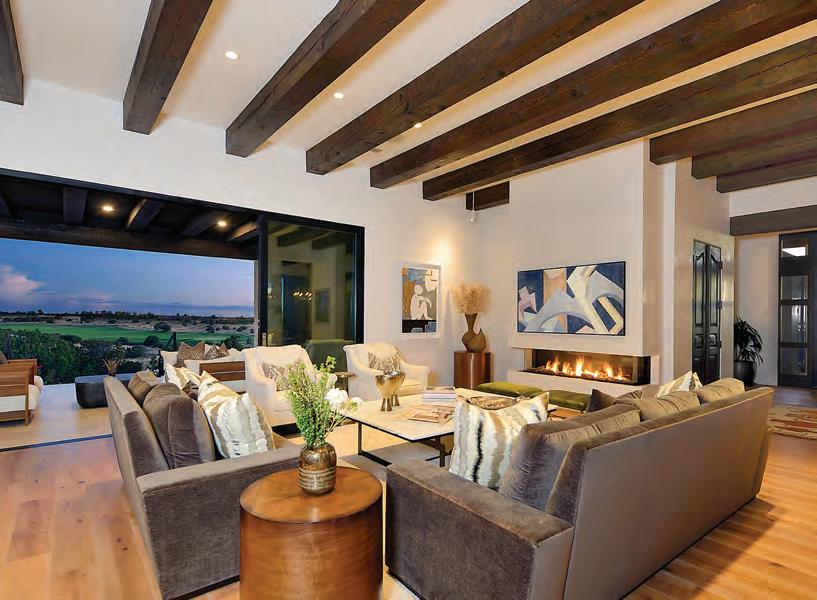
Española native Scott Cherry grew up with “an implicit understanding of adobe architecture.” His carpentry career emerged naturally from this familiarity with the city’s residences — as did the founding of his building and design company Lightfoot. Lightfoot earned the 2020 Grand Hacienda Award and in 2022 took home the Best in Show Santa Fe Traditional Award from the Parade of Homes.
How do you define traditional Santa Fe style?
One of the things that makes Santa Fe so interesting architecturally is the diversity of buildings. They are usually owner-built or built by families, and they were built very organically, so everyone was able to add their own style to them. There are some ground rules, but there’s some real freedom to explore.
What are some of those ground rules?
I think there are certain proportion rules. Obviously, there are also rules in the historical code.
One that comes to mind is that, in historic districts, there has to be 3 feet between the corner of a building and a window. The integrity of the [adobe] material created this guardrail. The material has some physical limitations that became the architectural vernacular.
What are the challenges of blending traditional Santa Fe style with modern lifestyles?

There’s some romanticism with clients about features of traditional Santa Fe style. For example, I’m not a proponent of adobe in modern construction. There are better ways to build modern buildings with more efficiency. And if [clients] do want an adobe house, they’ll say they don’t need insulation because [adobe] works so well with this environment. But the rooms in traditional homes had tiny spaces, and you can’t apply those same principles to modern spaces and architecture and get the same result. We educate clients and dig into what they really want at the end of the day. We discuss pros and cons and tradeoffs. My process is to really involve them.
How do traditional and contemporary styles complement each other?
I see the two styles going together well because they’re both minimal. Traditional style, for example, may have smooth plaster walls or bullnose corners that die into doors. Those [design details] fit contemporary homes too.
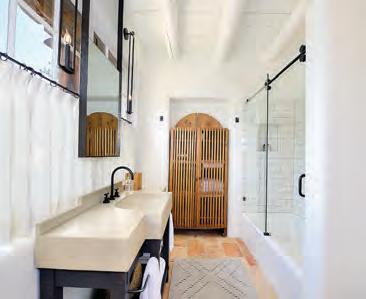
How can people maintain traditional Santa Fe style in their existing homes?
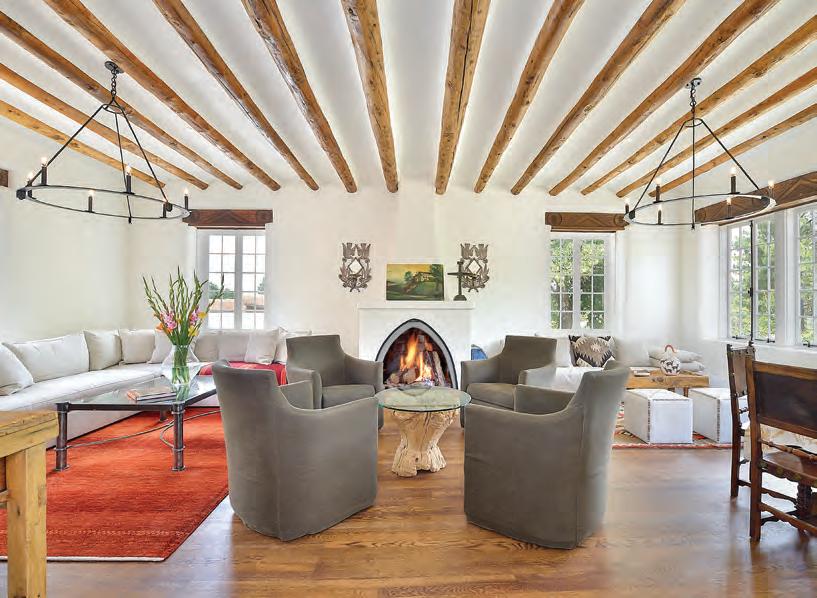

It’s always project-specific, but there’s a wisdom to doing less. You may have to accept smaller windows and using a trastero instead of a closet to preserve the integrity of a home. If you’re wanting an open-concept house and we have to pull a whole wall out, maybe build or find a new house? I recommend value-engineering a house to maintain its charming details and celebrating them rather than making it something completely different. — AMB
Scott Cherry, founder of Lightfoot, incorporated traditional elements in the company’s 2022 Parade of Homes entry.
